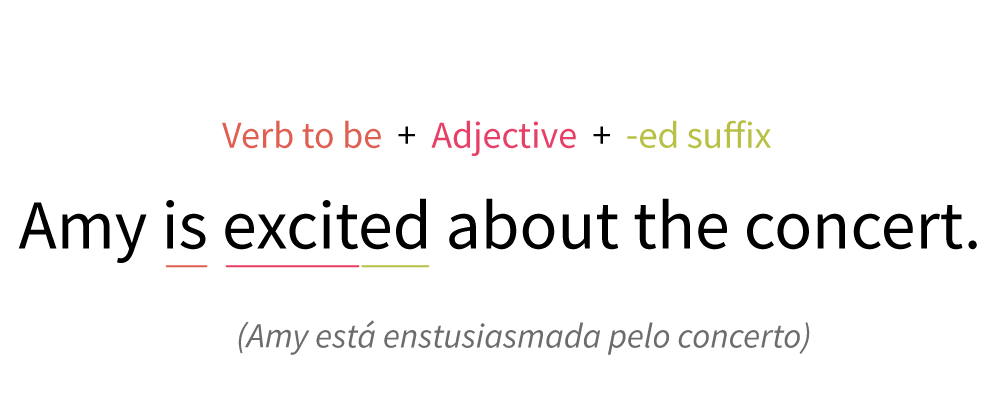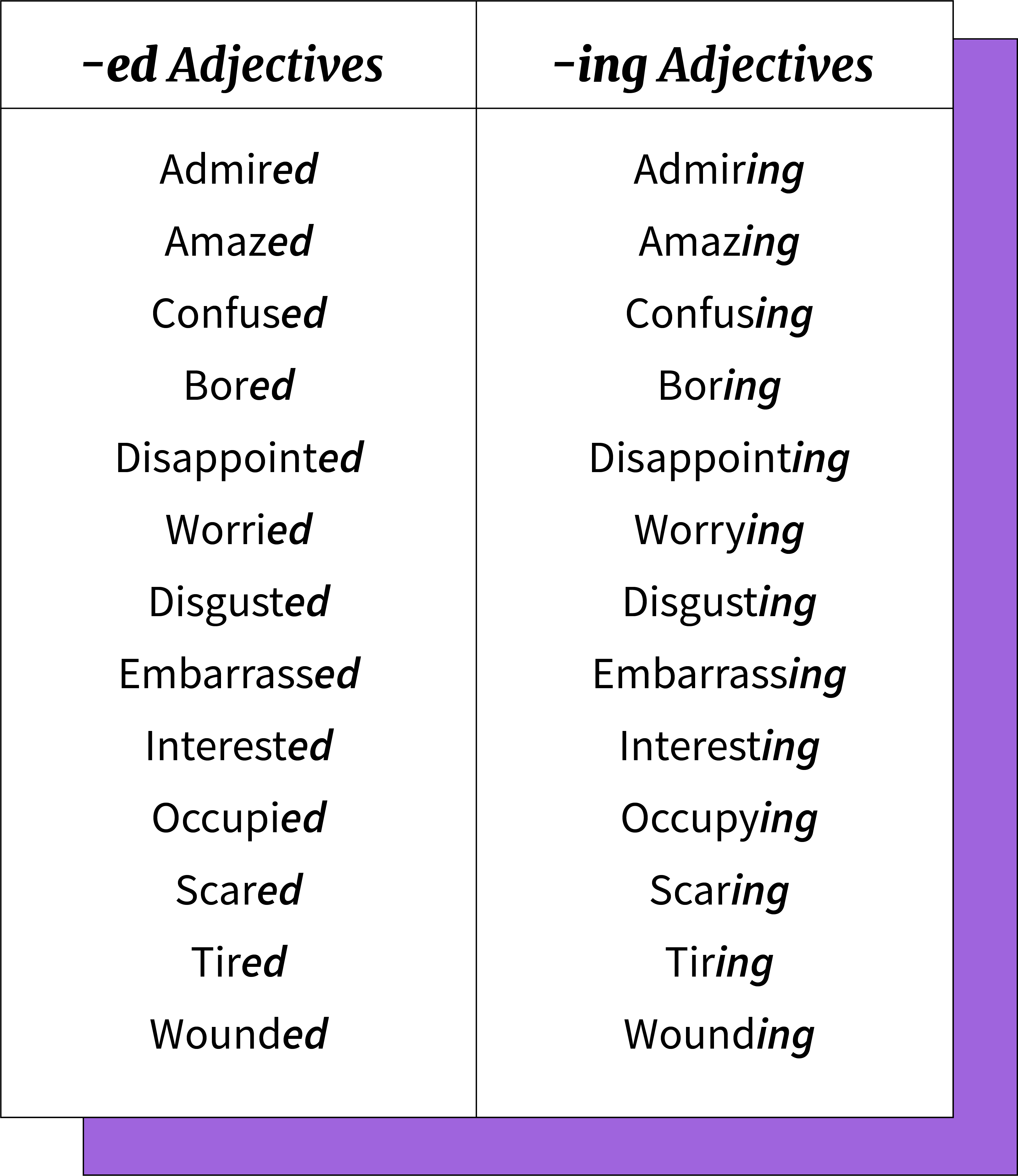
"ed" and "ing" adjectives
These suffixes are not just used to form the past and continuous verbal tenses. They are also used with adjectives.
This type of adjectives is composed of a verb and the suffix -ed or -ing.
Watch the following video and learn:
Always remember that the sense of the sentence changes according to the suffix used.
-ed adjectives
This is used to indicate or describe emotions. In other words, it indicates that the subject or person is feeling something. In the sentence, it follows the verb to be.
Its Spanish relative is "-ado", "-ido".

-ing adjectives
These adjectives indicate or describe the qualities of something or someone and are also used to refer to objects or situations.
Just like with "-ed" adjectives, it follows the verb to be in the sentence.

Differences
To talk about a person, use -ing adjectives to indicate a permanent quality, and use -ed adjectives to indicate a temporary quality.
Let's see some examples:







